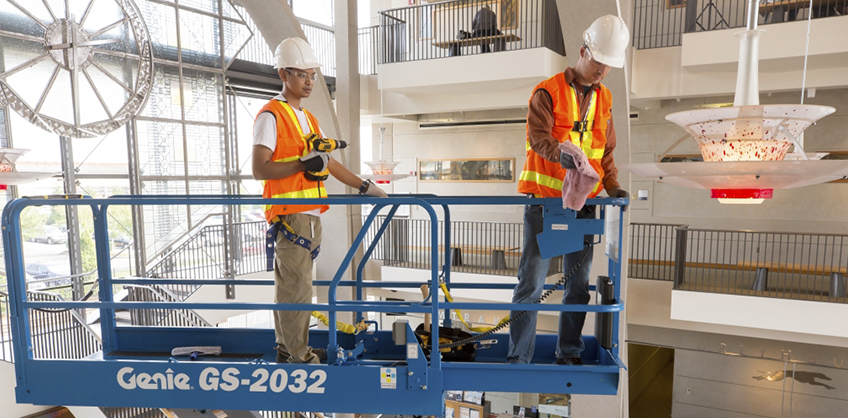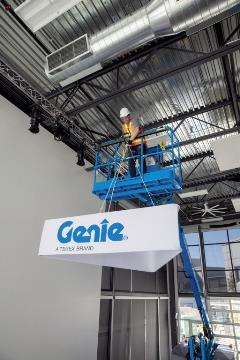How Aerial Operator Protection Evolves

When developing new operator protection technology, you must reach beyond equipment and listen to the workers who are using it each and every day. Whether laying drywall or installing piping, proper training and well-designed equipment help them work efficiently and get home safe. To understand the reality of rugged construction environments, Genie team members visit jobsites around the globe to watch operators and listen to their challenges and concerns.
One thing we’ve observed over the years is that jobsites continue to move faster, grow larger and become more congested. This growth led safety professional from all trades to begin asking for boom lifts with improved secondary guarding devices. These are optional accessories that help protect an operator against specific jobsite hazards.
In the last few years, safety professionals have started to request a better protective solution for certain jobsite hazards, such as overhead obstacles, and we knew from our on-site observations that the solution could not block visibility or access to the platform controls. It also would need to provide enough room for the operator to move away from the hazard, especially after a collision. Most importantly, it would need to alert others on the jobsite that help is needed though the use of loud sirens and bright flashing lights.
 Armed with this information, the Genie team set out to build a simple innovation. Our idea for a new protective solutions accessory started as a 3D computer model, ensuring a single concept could be used on all Genie boom lift platforms. It then went into physical prototyping, with early mock-ups test fitted, iterated and improved with a large group of construction safety professionals at the Genie Research and Design center.
Armed with this information, the Genie team set out to build a simple innovation. Our idea for a new protective solutions accessory started as a 3D computer model, ensuring a single concept could be used on all Genie boom lift platforms. It then went into physical prototyping, with early mock-ups test fitted, iterated and improved with a large group of construction safety professionals at the Genie Research and Design center.
Once the fit was right and an easy-to-install design was complete, steel prototypes were trialed on Genie booms already working on actual construction sites. This step in the process is crucial and is known as field testing. To ensure the accessory is exactly what operators need, prototypes were tested with the exact same safety professionals who originally voiced the need.
The most important part of this process is testing the accessory with real operators, performing real tasks, with real deadlines to meet and then getting their feedback. After more iterations, the accessory then goes into full production and begins shipping, but that isn’t the end of the story.
Genie focuses heavily on continuous improvements, which means that all products we sell — large and small — are improved over time based on feedback from customers. Our latest accessory, the Genie® Lift Guard™ Contact Alarm system, which is designed to alert others if an operator comes in contact with an overhead jobsite obstruction while at the platform controls, is no exception. And, we use these innovations to help us continue to introduce new improvements regularly. For example, the success of this new boom lift accessory has prompted demand for an additional solution for use on scissor lifts and vertical mast products.
The end result is the availability of a secondary guarding solution for the jobsites that require it, and one that gives operators the ability to work quickly and get the job done right. This is just one of many examples of ideas that start out as a simple need on a jobsite and evolves into a new equipment accessory that increases safe use and productivity for operators working at height.
